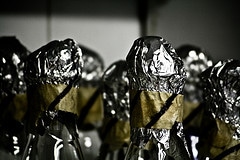If you’re performing DNA/RNA precipitations, you will have read Suzanne’s excellent article on which alcohol to use for precipitating your precious samples (check out some useful info in the comments for that article as well).
Its publication prompted the recall of a useful tip I learned from a post-doc many years ago, one of those ‘magic-hands’ scientists where everything seemed to work first time. This tip of his is on the removal of the 70% ethanol in the final step of the precipitation process.
The usual wisdom is to carefully drain off the ethanol and leave it to either air-dry or place in a speed-vac. The problem is that air-drying can be too slow, while the speed-vac can be too fast meaning that you risk over-drying the pellet making solubilisation more difficult.
So here’s the tip: After draining or pipetting off the 70% ethanol, simply:
- recap the tube
- pulse the centrifuge to bring down the remaining ethanol
- remove this liquid with a pipette and 200ul tip – you can get right alongside the pellet if visible. Leave the tube open as you move to the next sample.
By the time you’ve finished your series of tubes (even if n= 3), the pellets are dry always enough to add diluent immediately. Job done. This saves time and give you samples are just the right degree of “dry”, every time.
Any other tips for ethanol (or even isopropanol!) precipitation would be great to hear. Meanwhile – thanks Michael.





